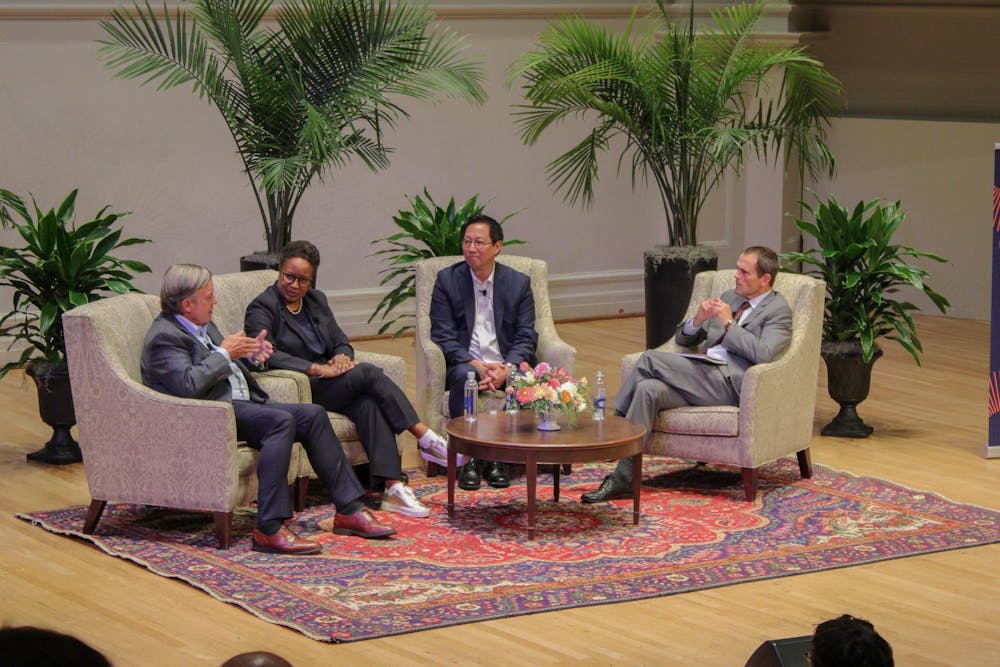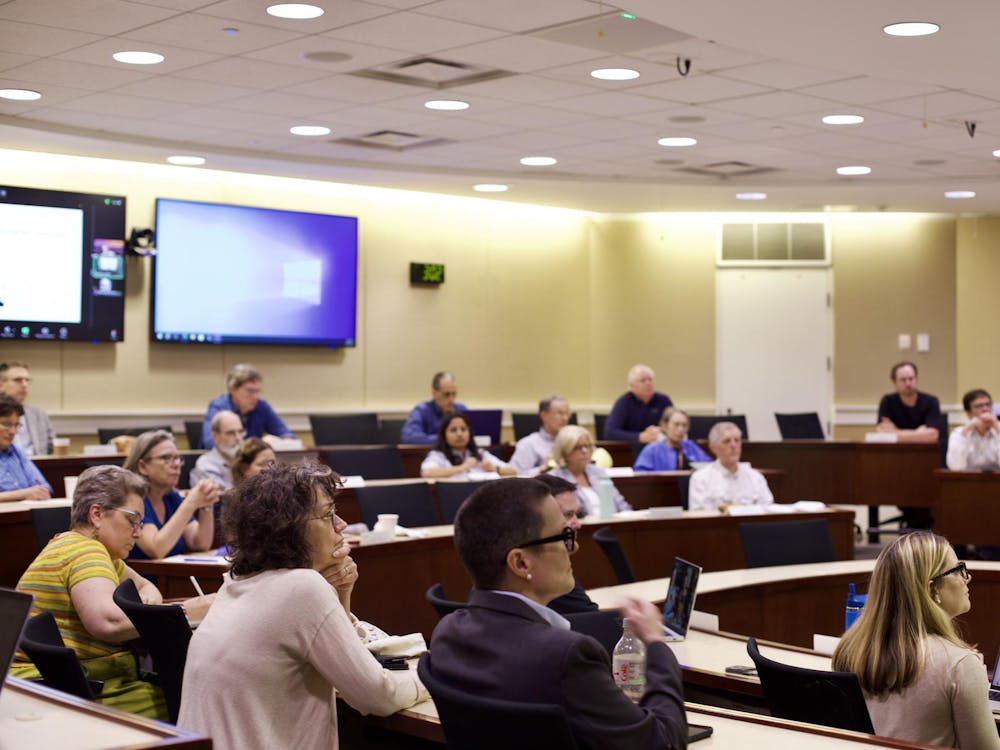The Futures Initiative, a program under the office of the executive vice president, hosted a panel Thursday — titled “University Futures: A President’s Panel” — between four university and college presidents. Moderated by President Jim Ryan, the panelists discussed the prospective futures of each of their institutions, with an emphasis on increasing interdisciplinary teaching opportunities and integrating technology to better serve students and faculty.
Alongside Ryan, the panel consisted of Michael Crow, president of Arizona State University, Harriet Nembhard, president of Harvey Mudd College and Santa Ono, president of the University of Michigan.
The Futures Initiative is an effort launched in 2024 by the University to anticipate societal and technological changes in higher education, such as generative artificial intelligence and virtual reality. The panel event is the first of a speaker series this fall that will host leaders across various industries to increase awareness and foster University-wide engagement around emerging technology issues, according to the Futures Initiative’s website.
Vice President of Research Lori McMahon opened Thursday’s event and spoke on the purpose of the Futures Initiative and the speaker series. She said through the program and this event, the University is hoping to explore questions about what it might do to facilitate innovation.
McMahon said the presidents at the event were not just making history at their institutions, but also shaping the future.
“These presidents are here to join us in laying a new foundation, a cornerstone of ideas and the possibilities for a monument to the future of higher education,” McMahon said.
Ryan began questions asking the panelists about the general future of higher education and asked panelists if they see the amount of time it takes to get an undergraduate degree changing in future years. Ono said he believes in efficiency when getting students their degrees and that he and his colleagues at the University of Michigan hold themselves accountable to give students degrees fast, noting the expense of college tuition.
“We believe in affordability,” Ono said. “We don’t apologize for trying to get students out of college as quickly as possible.”
On the other hand, Crow said time is not the unit of analysis universities should worry about, but he said they should worry about what students know when they finish. He said what is important for him is how universities empower students during whatever time they choose to devote to higher education.
Crow also said there needs to be a wider range of flexible and accessible programs for students to complete their education, saying that half the people who go to college never finish their degrees.
“Higher education in the United States has been unbelievably powerful, unbelievably successful, and is wholly inadequate,” Crow said.
Panelists discussed different technologies teachers are incorporating into their classrooms to help increase access to higher education, such as augmented reality and online courses. Ono said that the University of Michigan uses tools for enhanced learning, such as online courses and degree programs, to help make the school’s education more accessible.
Ono gave the example of a young woman from Afghanistan who applied to the University of Michigan, informing them that while she had not been able to go to school prior, she had taken their online courses and passed with flying colors.
“We admitted her, we got her out of the country, we got her money … and then she comes to the university and kicks everybody else’s butt,” Ono said.
In terms of possible improvements for higher education institutions, Ono said that moving forward, universities should make it a priority to maintain strong programs across a range of disciplines. He also said the University of Michigan must partner with other universities, industries and the government to support students in careers after graduation.
Each of the panelists agreed that they see the educational modes used in higher education changing in coming years. Nembhard said the common method of teaching currently is rigid, and said there needs to be more fluidity between the humanities and STEM disciplines.
Nembhard discussed interdisciplinary education within the unique context of Harvey Mudd, a small school focusing on distinct disciplines. He described a type of course at Harvey Mudd called Core impact, where multiple faculty co teach interdisciplinary courses that connect related topics from different fields. She said that an increase in interdisciplinary work across universities has the potential to enhance students’ education.
According to Nembhard, Harvey Mudd has a rigorous, hands-on approach to teaching, but the school also values caring about students as humans. She said they use their small ratio of students to faculty to better prepare students to address global problems.
“In our imagining of the future, it really is about how do we continue to build out these very intentional, close knit relationships between students and faculty,” Nembhard said.
The next event of the Futures Intitiative’s speaker series, titled “A Conversation with Dr. Alondra Nelson,” will take place Oct. 8. Nelson is the Harold F. Linder Chair in the School of Social Science at the Institute for Advanced Study — a center for research with the mission of protecting and promoting inquiry and academic freedom — and her discussion will cover equity and open-access in the social sciences.







